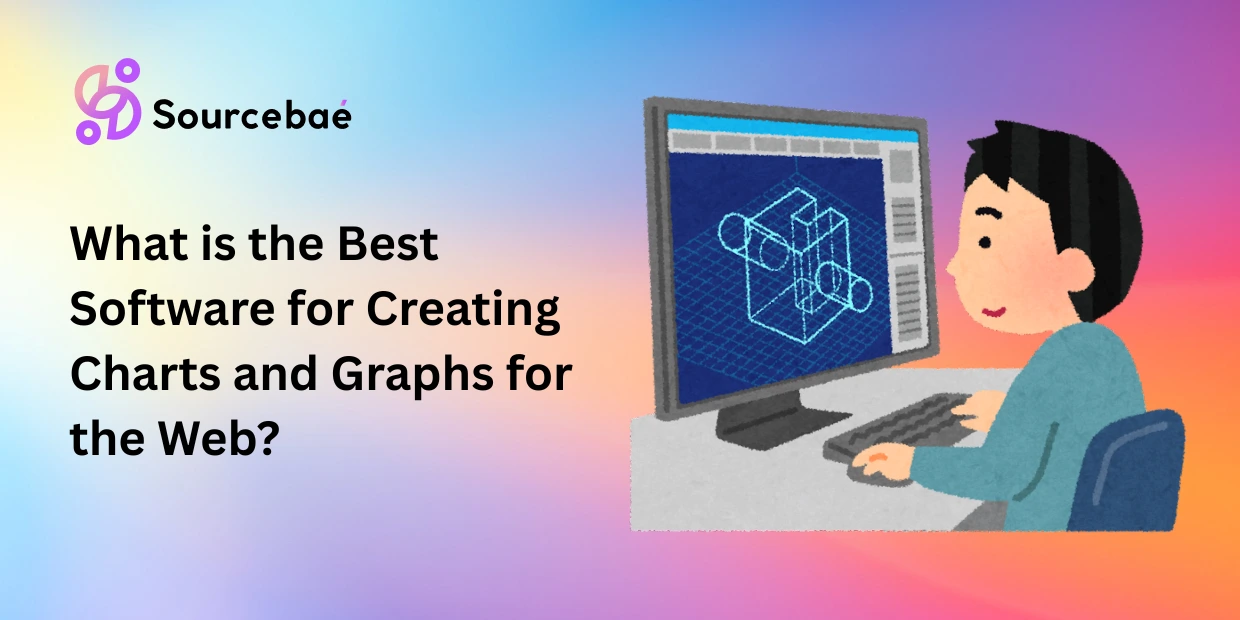The internet is a visual medium, and presenting data in a visually appealing and easy-to-understand manner is crucial for effective communication. Charts and graphs are powerful tools for displaying data, trends, and patterns. When it comes to creating these visual representations for the web, having the right software can make all the difference. In this article, we will explore various software options available for creating charts and graphs for the web, their features, ease of use, cost, and more.
Creating visually compelling charts and graphs is an essential aspect of data representation on the web. The right chart and graph creation software can significantly enhance the user experience and comprehension of complex data.
In this article, we will delve into the world of chart and graph creation software, exploring the best options available and helping you make an informed decision based on your specific needs.
Considerations for Choosing Software
When selecting the best software for creating charts and graphs for the web, several key factors should be taken into consideration. These include:
- Features and Capabilities: Assess the software’s features and capabilities to ensure they align with your requirements.
- Ease of Use and Learning Curve: Consider the software’s user-friendliness and learning curve for efficient utilization.
- Cost and Pricing Models: Evaluate the cost of the software and available pricing models to fit your budget.
- Customization and Flexibility: Analyze the software’s customization options and flexibility to tailor it to your needs.
Popular Chart and Graph Creation Tools
There are several popular software options available for creating charts and graphs for the web. Some of the top choices include:
- Google Charts: Known for its ease of use and wide range of chart types.
- D3.js: A powerful JavaScript library for creating dynamic, interactive visualizations.
- Tableau: Provides a robust platform for data visualization and exploration.
- Highcharts: Offers a variety of interactive charts and an easy-to-use interface.
- Plotly: Known for its interactive, web-based charting library.
Comparison of Features
To better understand the software options, let’s compare their features in detail.
| Software | Features | Ease of Use | Cost | Customization |
|---|---|---|---|---|
| Google Charts | Wide range of chart types, integration with Google Sheets | Easy | Free | Limited |
| D3.js | Highly customizable, supports dynamic, interactive charts | Moderate | Free | Extensive |
| Tableau | Rich features, extensive data connectivity | Moderate | Paid | Extensive |
| Highcharts | Interactive charts, ease of use | Easy | Paid | Extensive |
| Plotly | Web-based, interactive charts | Moderate | Freemium | Extensive |
Ease of Use and Learning Curve
The ease of use and learning curve vary among the software options. Google Charts and Highcharts are known for their user-friendly interfaces, making them suitable for beginners. D3.js, on the other hand, has a steeper learning curve due to its extensive customization capabilities.
Cost Analysis
Cost is a crucial factor when choosing software. Google Charts offers a free option, making it budget-friendly, while Tableau is a paid software. D3.js is open-source and free to use, and Highcharts and Plotly offer both free and paid plans.
Customization and Flexibility
When it comes to customization and flexibility, D3.js provides extensive options, allowing developers to create highly tailored visualizations. Highcharts and Plotly also offer a high level of customization, while Google Charts has limited customization features.
Integration with Other Tools
Integration with other tools is essential for seamless workflow. Google Charts easily integrates with Google Sheets, making data import and manipulation efficient. Tableau offers extensive data connectivity options, enhancing its integration capabilities.
Performance and Speed
Performance and speed are critical for providing a smooth user experience. Google Charts and Highcharts are known for their optimal performance and quick rendering of charts, ensuring a seamless user experience.
Customer Support and Documentation
Comprehensive customer support and documentation are crucial for effective usage of the software. Tableau and Highcharts provide robust customer support, including extensive documentation, tutorials, and community forums.
User Reviews and Ratings
User reviews and ratings offer valuable insights into the software’s actual performance and user satisfaction. Google Charts and Highcharts generally receive positive feedback for their ease of use and functionality.
Security and Data Privacy
Security and data privacy are paramount. All the mentioned software options adhere to industry standards and protocols, ensuring data security and privacy.
Future Trends and Updates
As technology advances, the landscape of chart and graph creation software is likely to evolve. Trends such as AI-powered analytics and enhanced interactivity are expected to shape the future of these tools.
Recommendations
Based on the comparison and analysis, the best software for creating charts and graphs for the web may vary depending on your specific requirements. For beginners or those looking for ease of use, Google Charts and Highcharts are excellent choices. For developers seeking extensive customization, D3.js is highly recommended.
Conclusion
In conclusion, selecting the best software for creating charts and graphs for the web involves considering various factors like features, ease of use, cost, customization, and integration capabilities. Assessing these aspects will help you make an informed decision based on your project needs.
READ MORE: What Software Do People Use to Analyze Data?






